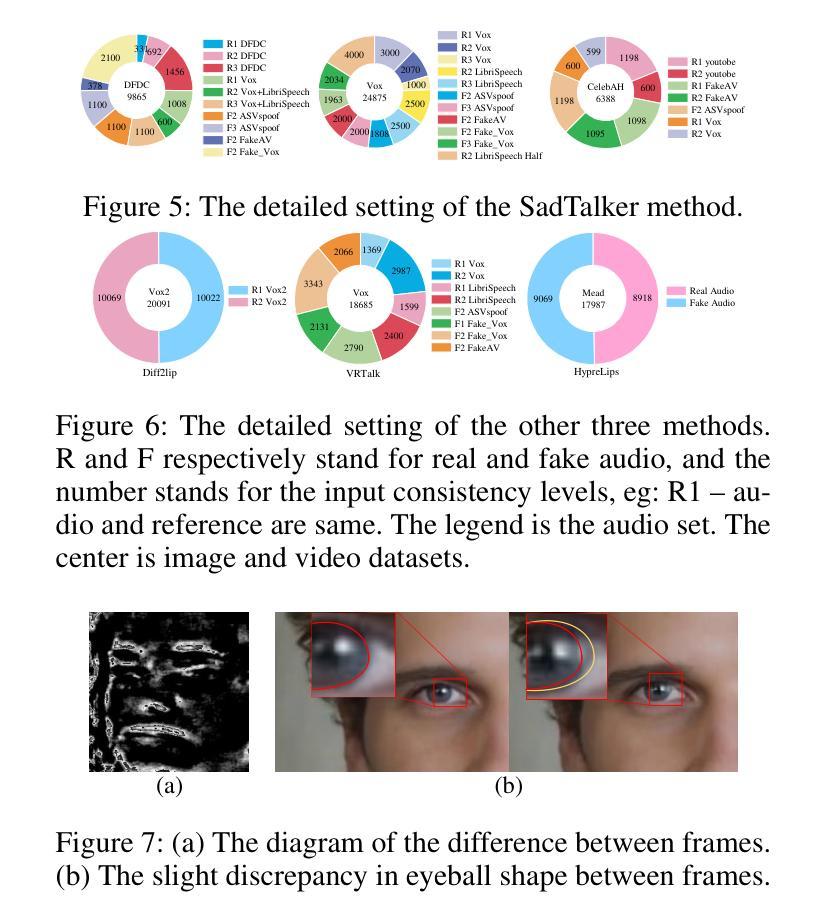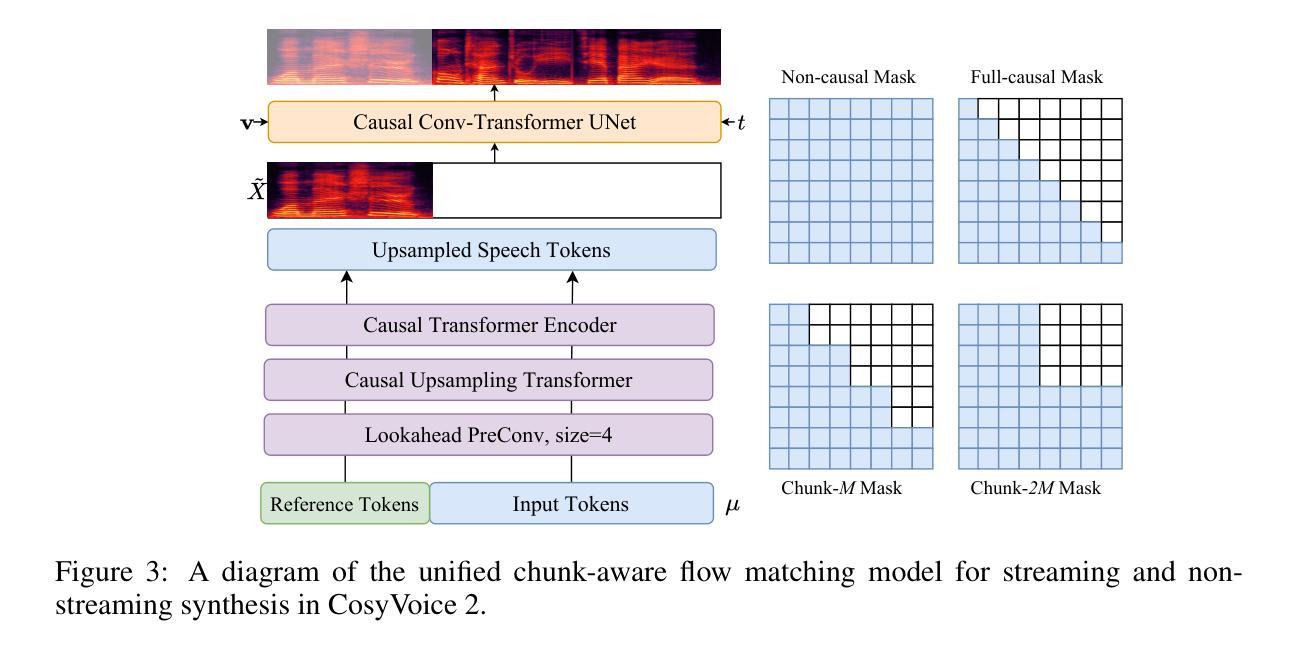⚠️ 以下所有内容总结都来自于 大语言模型的能力,如有错误,仅供参考,谨慎使用
🔴 请注意:千万不要用于严肃的学术场景,只能用于论文阅读前的初筛!
💗 如果您觉得我们的项目对您有帮助 ChatPaperFree ,还请您给我们一些鼓励!⭐️ HuggingFace免费体验
2024-12-19 更新
Dialogue with the Machine and Dialogue with the Art World: Evaluating Generative AI for Culturally-Situated Creativity
Authors:Rida Qadri, Piotr Mirowski, Aroussiak Gabriellan, Farbod Mehr, Huma Gupta, Pamela Karimi, Remi Denton
This paper proposes dialogue as a method for evaluating generative AI tools for culturally-situated creative practice, that recognizes the socially situated nature of art. Drawing on sociologist Howard Becker’s concept of Art Worlds, this method expands the scope of traditional AI and creativity evaluations beyond benchmarks, user studies with crowd-workers, or focus groups conducted with artists. Our method involves two mutually informed dialogues: 1) ‘dialogues with art worlds’ placing artists in conversation with experts such as art historians, curators, and archivists, and 2)’dialogues with the machine,’ facilitated through structured artist- and critic-led experimentation with state-of-the-art generative AI tools. We demonstrate the value of this method through a case study with artists and experts steeped in non-western art worlds, specifically the Persian Gulf. We trace how these dialogues help create culturally rich and situated forms of evaluation for representational possibilities of generative AI that mimic the reception of generative artwork in the broader art ecosystem. Putting artists in conversation with commentators also allow artists to shift their use of the tools to respond to their cultural and creative context. Our study can provide generative AI researchers an understanding of the complex dynamics of technology, human creativity and the socio-politics of art worlds, to build more inclusive machines for diverse art worlds.
本文提出了一种以对话为方法评估生成式人工智能工具在文化情境下的创意实践的方法,这种方法认识到艺术的情境社会性。该方法借鉴了社会学家霍华德·贝克尔的“艺术世界”概念,扩大了传统人工智能和创造力评估的范围,超越了基准测试、众包用户研究或与艺术家的焦点小组。我们的方法包括两种相互交流的对话:1)与艺术世界的对话,让艺术家与专家如艺术史学家、策划人和档案保管人进行交流对话;2)与机器的对话,通过结构化的艺术家和评论家领导实验,使用最先进的生成式人工智能工具进行促进。我们通过与非西方艺术世界,特别是波斯湾地区的艺术家和专家进行的案例研究,展示了这种方法的价值。我们追踪这些对话如何帮助创建丰富文化情境下的评估形式,对生成式人工智能的代表性可能性进行评估,这些评估模仿了生成艺术作品在更广泛的艺术生态系统中的接受度。让艺术家与评论家对话也允许艺术家根据他们的文化和创意背景调整他们对工具的使用。我们的研究可以为生成式人工智能研究人员提供对技术、人类创造力和艺术世界的政治动态的复杂理解,以构建更多元化的机器,适应不同的艺术世界。
论文及项目相关链接
PDF NeurIPS 2024 Creative AI Track
Summary
本文提出一种通过对话来评估生成式人工智能工具在文化情境中的创意实践的方法。该方法借鉴了社会学家霍华德·贝克尔的“艺术世界”概念,拓展了传统的人工智能和创造力评估方法,不再局限于基准测试、用户研究、众包工人或艺术家群体的小组调查。本文强调的“对话”包括与“艺术世界”的对话和与机器的对话。通过与艺术家和非西方艺术世界的专家(如艺术史学家、策展人和档案保管员)的对话,以及与最先进生成式人工智能工具的艺术家和评论家引导的实验对话,展示了该方法的价值。这种方法有助于为生成式人工智能在模仿广义艺术生态系统中生成作品时的代表性可能性进行文化和情境丰富的评估。同时,艺术家与评论员的对话也让艺术家能够根据他们的文化和创意背景调整工具的使用。本研究可为生成式人工智能研究人员提供对技术、人类创造力和艺术世界的复杂动态的理解,以构建面向多元艺术世界的更具包容性的机器。
Key Takeaways
- 该论文提出了一种新的评估生成式人工智能工具的方法,即通过对话方式,旨在更全面地评估工具在文化情境中的创意实践。
- 方法涵盖了与“艺术世界”的对话,包括与艺术家、专家(如艺术史学家、策展人和档案保管员)的交流。
- 论文强调了与机器的对话,通过艺术家和评论家引导的实验,评估生成式人工智能工具的代表性能力。
- 对话方法有助于创造丰富文化和情境化的评估,反映生成式人工智能在模拟广义艺术生态系统接收生成作品时的表现。
- 艺术家能够通过与评论员的对话,根据文化和创意背景调整工具的使用。
- 此研究为生成式人工智能研究人员提供了对技术、人类创造力和艺术世界复杂动态的理解。
点此查看论文截图


Multi-Party Supervised Fine-tuning of Language Models for Multi-Party Dialogue Generation
Authors:Xiaoyu Wang, Ningyuan Xi, Teng Chen, Qingqing Gu, Yue Zhao, Xiaokai Chen, Zhonglin Jiang, Yong Chen, Luo Ji
Large Language Models (LLM) are usually fine-tuned to participate in dyadic or two-party dialogues, which can not adapt well to multi-party dialogues (MPD), which hinders their applications in such scenarios including multi-personal meetings, discussions and daily communication. Previous LLM-based researches mainly focus on the multi-agent framework, while their base LLMs are still pairwisely fine-tuned. In this work, we design a multi-party fine-tuning framework (MuPaS) for LLMs on the multi-party dialogue datasets, and prove such a straightforward framework can let the LLM align with the multi-party conversation style efficiently and effectively. We also design two training strategies which can convert MuPaS into the MPD simulator. Substantial experiments show that MuPaS can achieve state-of-the-art multi-party response, higher accuracy of the-next-speaker prediction, higher human and automatic evaluated utterance qualities, and can even generate reasonably with out-of-distribution scene, topic and role descriptions. The MuPaS framework bridges the LLM training with more complicated multi-party applications, such as conversation generation, virtual rehearsal or meta-universe.
大型语言模型(LLM)通常经过微调以参与二元或两方对话,但它们无法很好地适应多方对话(MPD),这阻碍了它们在包括多人会议、讨论和日常交流等场景中的应用。之前基于LLM的研究主要集中在多代理框架上,而其基础LLM仍然是对对对话进行微调。在这项工作中,我们为LLM设计了一个多方微调框架(MuPaS),用于多方对话数据集,并证明这种简单的框架可以让LLM高效且有效地适应多方对话风格。我们还设计了两种可以将MuPaS转换为MPD模拟器的训练策略。大量实验表明,MuPaS可以实现最新的多方响应、更高的下一个发言者预测准确率、更高的人类和自动评估的话语质量,并且可以在分布外的场景、主题和角色描述中生成合理的响应。MuPaS框架将LLM训练与更复杂的多方应用(如对话生成、虚拟排练或元宇宙)联系起来。
论文及项目相关链接
Summary
大型语言模型(LLM)在应对多方对话(MPD)时的适应性问题,制约了其在多人会议、讨论和日常沟通等场景的应用。本研究设计了一种针对多方对话数据集的多方微调框架(MuPaS),并证明该框架能有效提升LLM对多方对话的适应性。同时,本研究还设计了两种训练策略,将MuPaS转化为MPD模拟器。实验显示,MuPaS可实现最佳的多方响应,提高预测下一位发言者的准确性,提升人机评估的发言质量,并能在超出场景分布的场景、话题和角色描述中生成合理的回应。MuPaS框架为LLM训练与更复杂的多方应用(如对话生成、虚拟排练或元宇宙)之间搭建了桥梁。
Key Takeaways
- 大型语言模型(LLM)在多方对话(MPD)中的适应能力有待提高。
- 提出了一种新的多方微调框架(MuPaS)来优化LLM在多方对话中的表现。
- MuPaS框架能有效提升LLM在多方对话数据集中的性能。
- 设计了两种训练策略,将MuPaS转化为MPD模拟器以提高模拟效果。
- MuPaS框架实现了最佳的多方响应和预测下一位发言者的准确性。
- MuPaS能提升人机评估的发言质量,并能在不同的场景、话题和角色描述中生成合理的回应。
点此查看论文截图
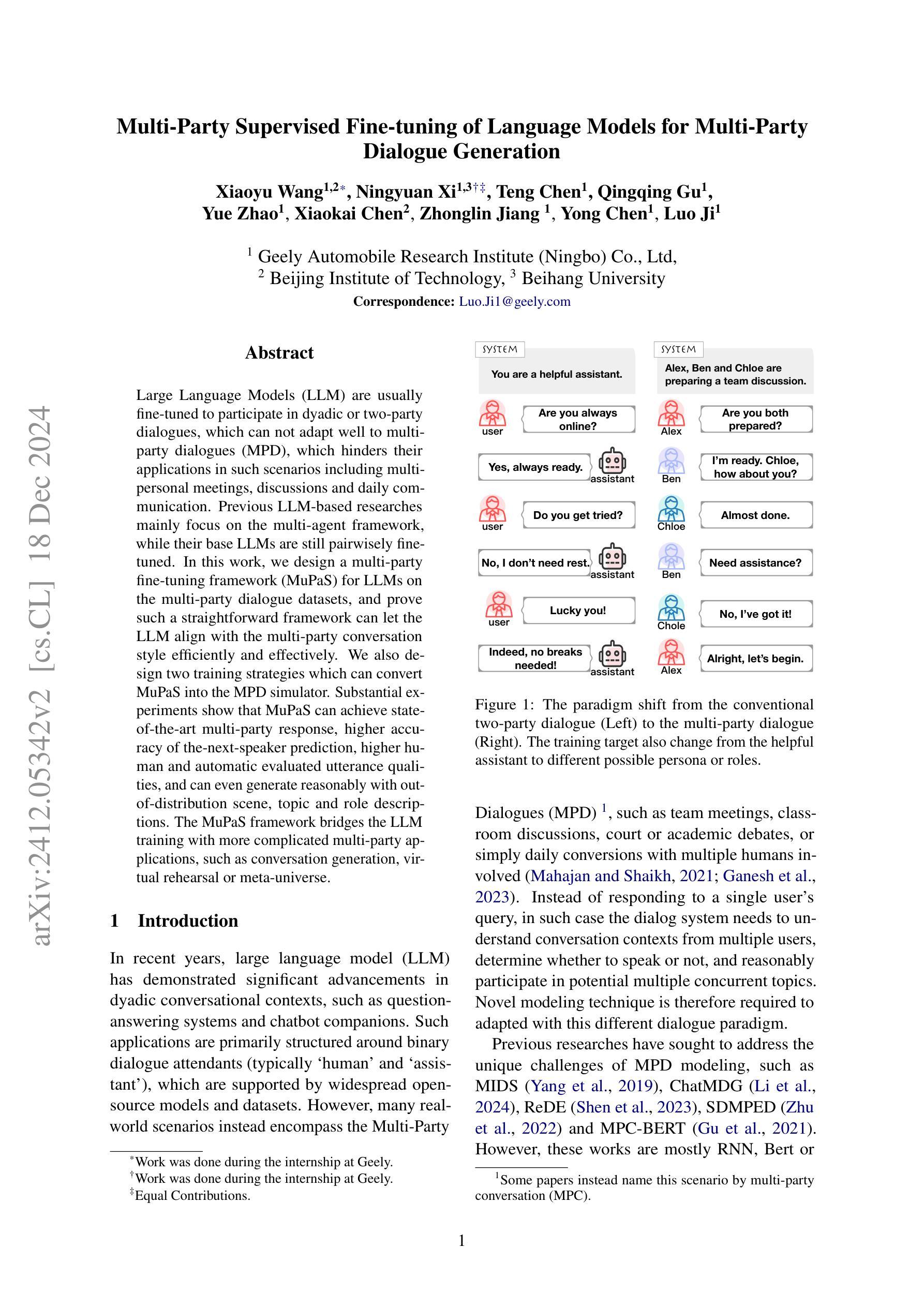
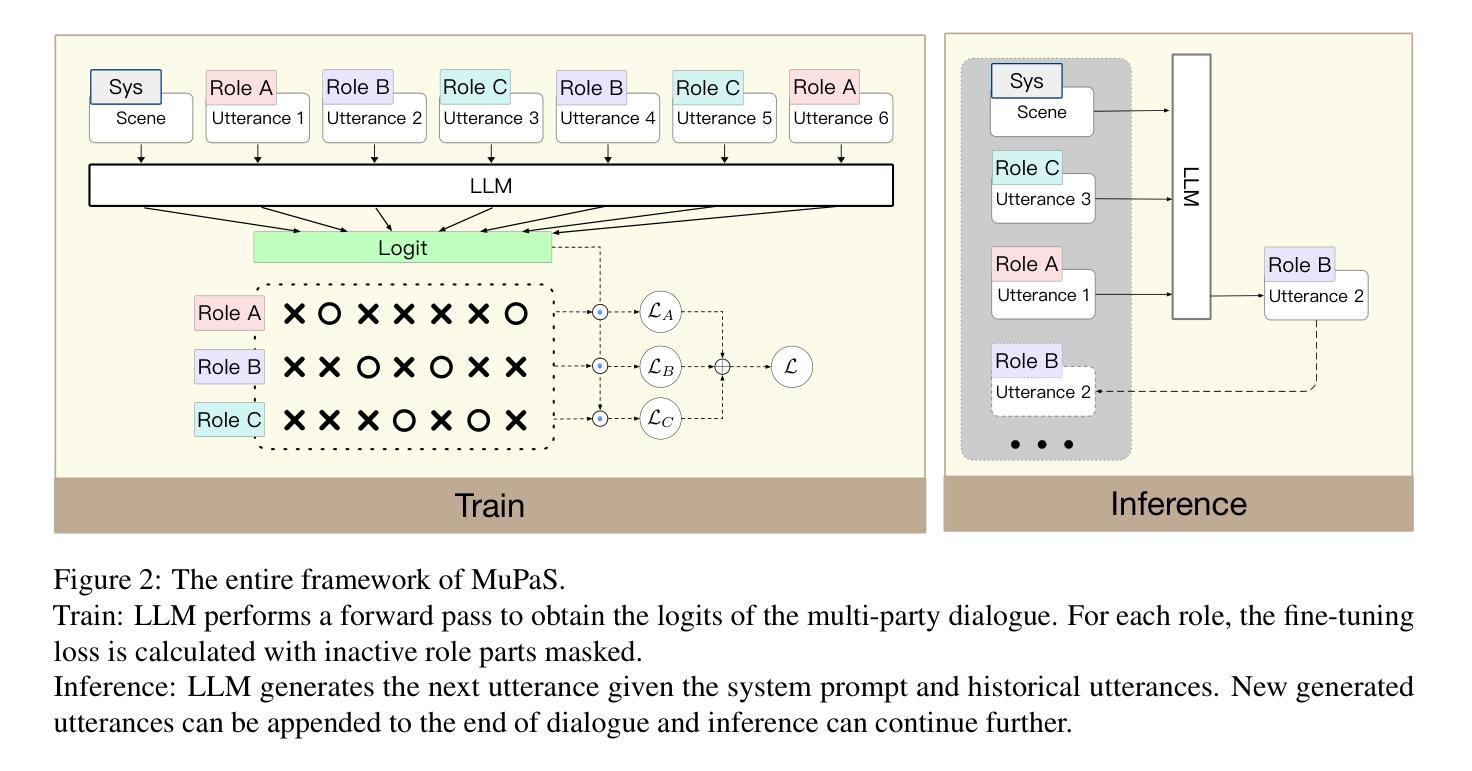
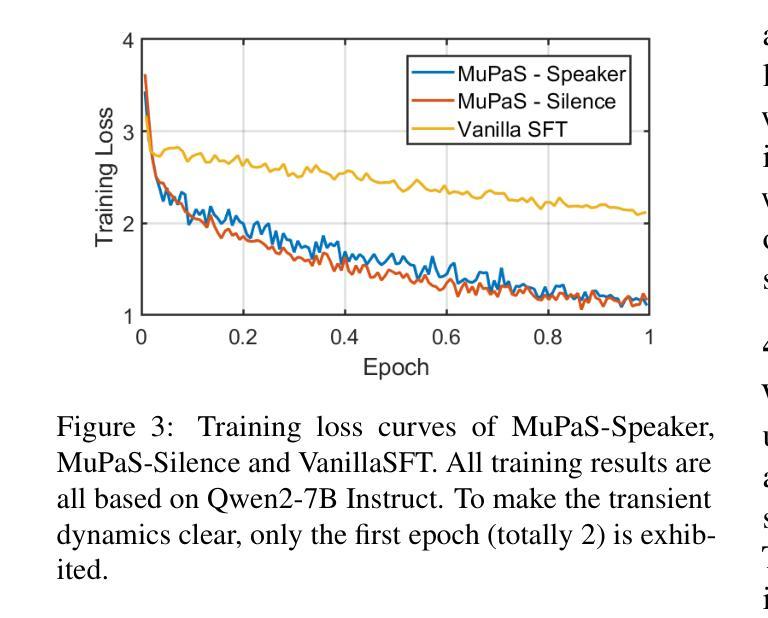
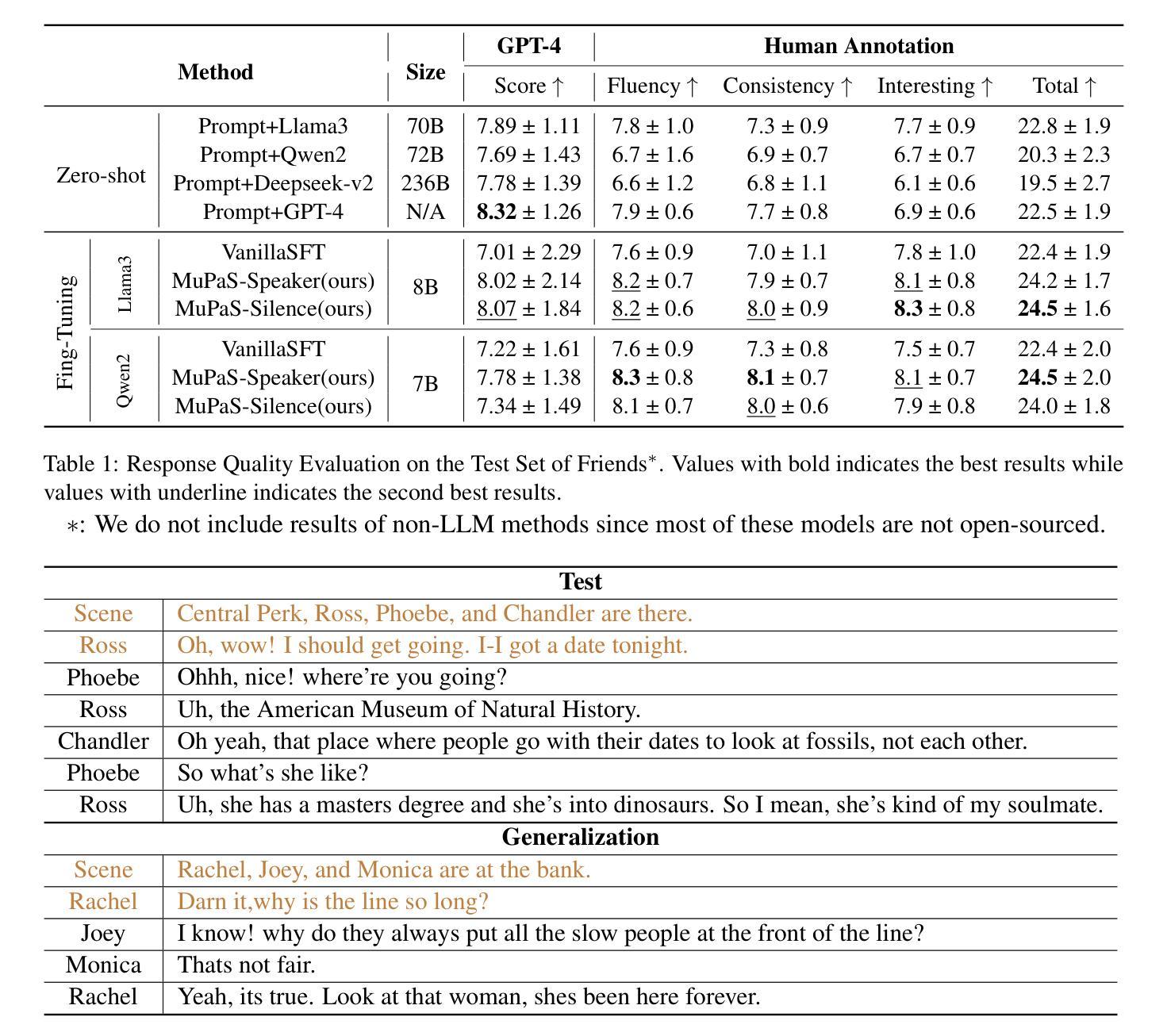
Gravitational radiation reaction for compact binary systems at the fourth-and-a-half post-Newtonian order
Authors:Luc Blanchet, Guillaume Faye, David Trestini
We compute the gravitational radiation-reaction force on a compact binary source at the fourth-and-a-half post-Newtonian (4.5PN) order of general relativity, i.e., 2PN order beyond the leading 2.5PN radiation reaction. The calculation is valid for general orbits in a general frame, but in a particular coordinate system which is an extension of the Burke-Thorne coordinate system at the lowest order. With the radiation-reaction acceleration, we derive (from first principles) the flux-balance laws associated with the energy, the angular and linear momenta, and the center-of-mass position, in a general frame and up to 4.5PN order. Restricting our attention to the frame of the center of mass, we point out that the equations of motion acquire a non-local-in-time contribution at the 4.5PN order, made of the integrated flux of linear momentum (responsible for the recoil of the source) together with the instantaneous flux of center-of-mass position. The non-local contribution was overlooked in the past literature, which assumed locality of the radiation-reaction force in the center of mass frame at 4.5PN order. We discuss the consequences of this non-local effect and obtain consistent non-local equations of motion and flux balance laws at 4.5PN order in the center-of-mass frame.
我们计算了在广义相对论的四又二分之一后牛顿(4.5PN)阶,即超出主要2.5PN辐射反应的2PN阶上,紧凑二进制源上的引力辐射反作用力。该计算对于一般轨道在一般框架中是有效的,但在特定坐标系中,该坐标系是最低阶的伯克-索恩坐标系的一种扩展。通过辐射反应加速度,我们从基本原理推导出与能量、角动量和线性动量以及质心位置相关的流量平衡定律,这些定律适用于一般框架且在4.5PN阶有效。仅关注质心框架,我们指出,在4.5PN阶,运动方程获得了非时域贡献,由线性动量的积分流量(负责源的后座力)和质心位置的瞬时流量组成。过去文献中忽略了非局部贡献,该文献假定在质心框架的4.5PN阶中辐射反应力的局部性。我们讨论了这种非局部效应的后果,并在质心框架中获得了一致的非局部运动方程和流量平衡定律,这些定律在4.5PN阶有效。
论文及项目相关链接
PDF 40 pages, 1 table
Summary
该文本计算了相对论中广义相对论的四又二分之一后牛顿(4.5PN)等级下紧凑双星源上的引力辐射反作用力。在一般的轨道和框架内,推导了能量、角动量和质心位置的流量平衡定律。在质心框架内,指出在4.5PN等级下,运动方程获得了非即时性的贡献,包括线性动量的积分通量和质心位置的即时通量。过去文献忽视了这一点,假定在质心框架中辐射反作用力在4.5PN等级是局部性的。本文讨论了这一非局部效应的后果,并获得了质心框架中一致的局部和非局部方程和运动平衡定律。
Key Takeaways
- 引力辐射反作用力在广义相对论的四又二分之一后牛顿等级的计算方法。
- 计算适用于一般的轨道和框架。
- 在质心框架内,推导了能量、角动量和质心位置的流量平衡定律。
- 在4.5PN等级下,运动方程获得了非即时性的贡献。
- 非局部效应包括线性动量的积分通量和质心位置的即时通量。
- 过去文献忽视了这一非局部效应的贡献。
点此查看论文截图

